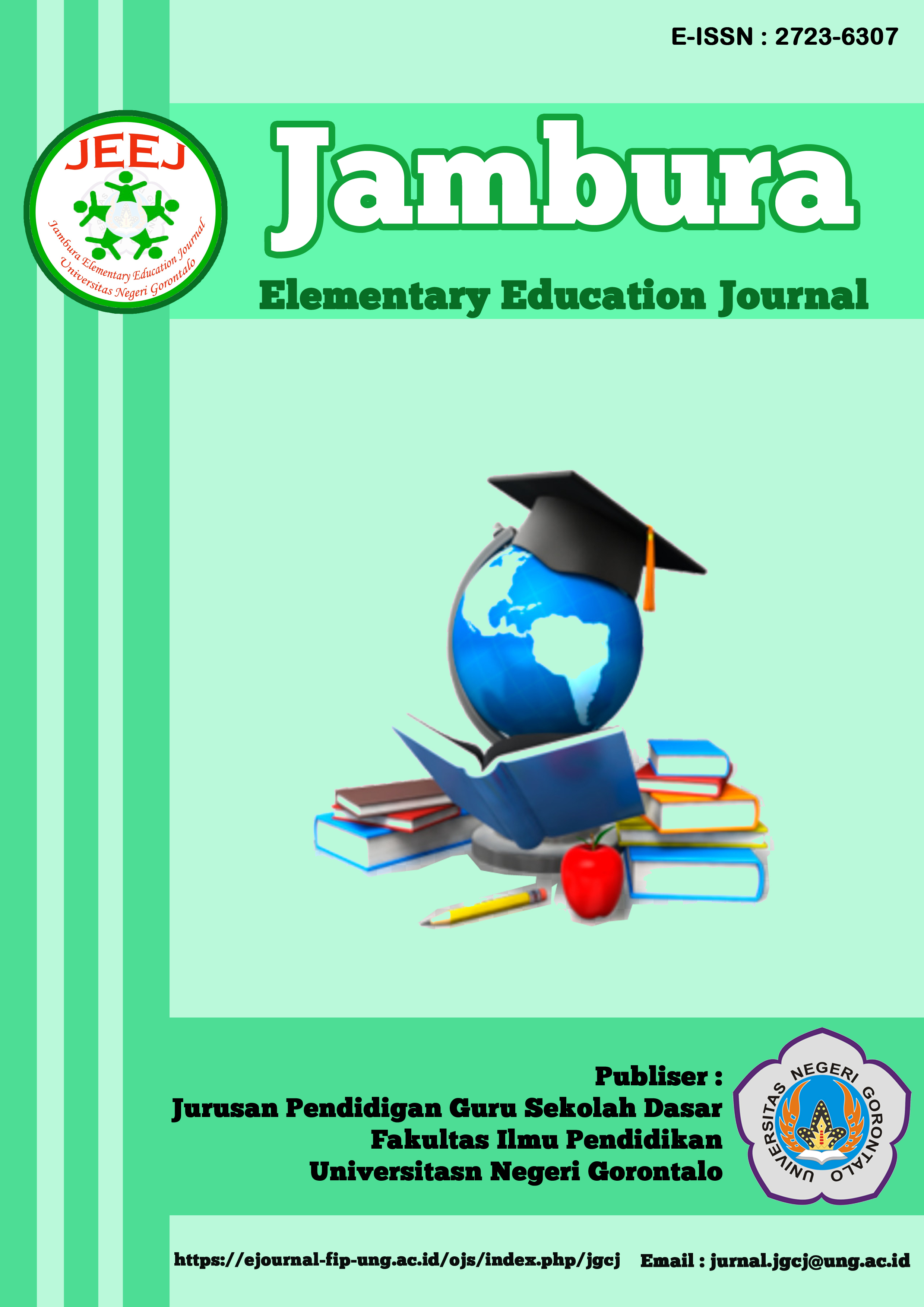CARTOON MOVIE CLIPS: MEDIA INOVATIF DALAM MENINGKATKAN KOSAKATA BAHASA INGGRIS SISWA SDN 5 SUWAWA
Abstract
This study investigates the effectiveness of using cartoon movie clips to enhance students' vocabulary mastery at SDN 5 Suwawa. The research employed a pre-experimental design with one group pre-test and post-test involving 31 fifth-grade students. The treatment was conducted over six sessions, where students were taught vocabulary through animated clips combined with games and role-playing strategies. The data were collected through vocabulary tests administered before and after the treatment. The results showed a significant improvement in students’ vocabulary scores, with the average score increasing from 32.93 in the pre-test to 65.5 in the post-test. Statistical analysis using a t-test indicated that the calculated t-value (-26.7) was lower than the critical value (-1.70), leading to the rejection of the null hypothesis (H0) and acceptance of the alternative hypothesis (H1). These findings support the conclusion that cartoon movie clips are effective in improving vocabulary mastery. Moreover, cartoon clips provided a visual and auditory learning experience that made vocabulary learning more engaging and enjoyable. However, challenges such as potential distractions and limited generalizability were also identified.
References
Arikunto, S. (2006). Prosedur Penelitian: Suatu Pendekatan Praktik. Jakarta: PT Rineka Cipta.
Crystal, D. (2003). English as a Global Language (2nd ed.). Cambridge: Cambridge University Press.
Ghozali, I. (2009). Aplikasi Analisis Multivariate dengan Program SPSS. Semarang: Universitas Diponegoro.
Kementerian Pendidikan dan Kebudayaan. (2016). Peraturan Menteri Pendidikan dan Kebudayaan Nomor 24 Tahun 2016 tentang Kompetensi Inti dan Kompetensi Dasar Pelajaran pada Kurikulum 2013 pada Pendidikan Dasar dan Pendidikan Menengah. Jakarta: Kemendikbud.
Liu, C., & Philip, G. (2019). Survey on the Usefulness of Animated Videos to Students’ Learning. [Studi dalam bentuk survei]. Dalam artikel yang mengulas efektivitas media animasi dalam pembelajaran.
Oxford University Press. (2008). Oxford Advanced Learner’s Dictionary of Current English (8th ed.). New York: Oxford University Press.
Richard, J. C., & Renandya, W. A. (Eds.). (2002). Methodology in Language Teaching: An Anthology of Current Practice. Cambridge: Cambridge University Press.
Sugiyono. (2010). Metode Penelitian Kuantitatif dan R&D. Bandung: Alfabeta.
Sugiyono. (2016). Metode Penelitian Kuantitatif, Kualitatif, dan R&D. Bandung: PT Alfabeta.
Syamsudin, H., & Damianti, I. (2006). Metode Penelitian Pendidikan Bahasa. Bandung: PT Remaja Rosdakarya.
Taringan, H. G. (1989). Pengajaran Kosa Kata. Bandung: Angkasa.
Thornbury, S. (2002). How to Teach Vocabulary. United Kingdom: Pearson Education Limited.
Unwin, D., & McAleese, R. (1978). The Encyclopaedia of Educational Media Communications and Technology. London: Palgrave Macmillan UK. https://doi.org/10.1007/978-1-349-81526-5
Wittich, W. A., & Schuller, C. F. (1953). Audio-Visual Materials: Their Nature and Use. New York: Harper and Brothers Company.
Copyright (c) 2025 Haris Danial, Nurlin Amelia Chelsi Ngadi, Noerja Fadhilla Hadjaratie

This work is licensed under a Creative Commons Attribution-NonCommercial-ShareAlike 4.0 International License.







